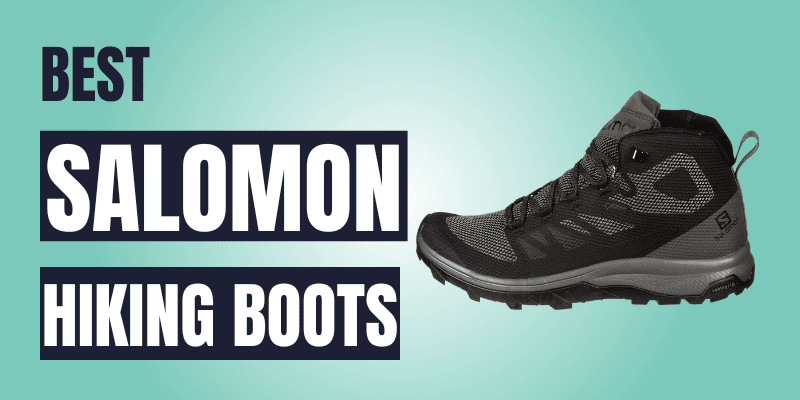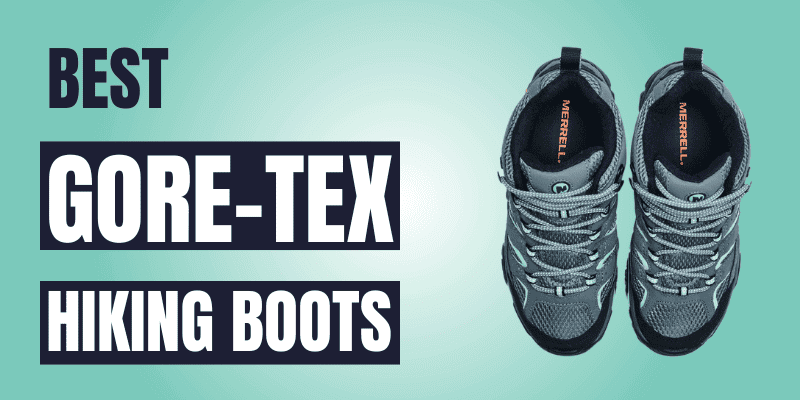I’m sure you might have thought about how to clean hiking boots or wash them properly for a more durable and better appearance. However, the ‘right way’ of doing things is something that matters a lot.
You can’t use harsh detergents as they damage the boot’s texture. In the same way, you cannot use a mild detergent that doesn’t take off caked-on layers of mud. The mud removal and the inside cleaning of the boot demand a pro-level approach that makes the results worth seeing.
How to Take Care of Hiking Boots? Cleaning, Washing & Drying
Whether you own the Asolo hiking boot or Keen, Timberland, or Salmon, the boot-cleaning method I’m sharing applies to all. As you know, there are several ways of cleaning hiking boots; it is the first thing you do right after hiking or repairing them. So, let’s see each way one by one.
1. Remove the Laces and Insole
Remove the laces and insole. This will make it easier to access all areas of the boot and will also allow the laces and insole to be cleaned separately.
2. Clean the Boot with Brush
First, the boot needs to be cleaned with a brush to remove the caked-on dirt. You can grab a boot brush or an old toothbrush for precise cleaning. Make sure to brush every nook and corner of the boot, such as eyelets, outsoles, tongue, and seams, to remove the stubborn dirt. Pay heed to the tight spots.

3. Clean the Uppers of the Boot
If you are removing mud and dirt from the leather hiking boots, make sure to be gentle. Too much of an aggressive brush from the upper can damage and tear the texture if your boot is older.
The upper cleaning involves removing the laces to scrub and run the dirt out efficiently.
Also, the boot inside cleaning involves the removal of the insole, midsole, and removable footbed for its thorough cleanse. You can wash the insole if you’re looking for a way to clean smelly hiking boots.
4. Use a Perfect Boot Cleaner
Regular soap or cleaning agent is dangerous for leather hiking boots as they can damage the waterproof membrane. For cleaning boots like Asolo hiking boots, you cannot use harsh detergent that can otherwise damage the texture or fabric in any way. Preferably, you should use 80% water and 20% vinegar to remove the scum and mold from the boot.
Also, you can buy the boot cleaner kit if you want better and quicker results.
5. Soak the Laces
If the boot has many strains and dirt that is hard to brush away, soak it in the water for a few minutes. Also, dip the laces and insole for complete clean-up. For stain removal, use a rather hard nylon brush and dishwasher to scrub it and leave it on. However, for a suede hiking boot, don’t put too much pressure; it can damage the material.

6. Use Clean Water for Boot Washing
Clean wear for hiking boot washing is a must. Also, it helps if your boots are smelly or have a build-up odor. Use clean water to rinse after you have washed it with the water and vinegar mixture.
Note that you should never put the boots in the washing machine since it can ruin their seams, texture, and quality.
7. Washing the Synthetic Hiking Boots
If your hiking boot features synthetic uppers, its washing differs. Simply fill up the container or tub with water (lukewarm) and use a pinch of dish soap in it.
Now immerse the boot into the water and use a boot brush or vegetable brush to scrub off the dirt or debris. You can also use a towel to scrub its fabric. After scrubbing the boot inside out, rinse it with clean water and use a neat cloth fabric to dry the excessive water.
During washing, if you are encountering a mildew smell, then use a few drops of vinegar in the water, it will remove the mildew smell from your boot.
8. Drying of Hiking Boots
After cleaning and washing the hiking boot, drying also demands care. If you want to leave the boots all smelly, stuff them with newspaper (paper soaks smell) and leave it inside till it soaks the dampness and moisture of the boot. Let the boot air dry and don’t keep them near any heat source such as a heater.
You can also use a pinch of baking soda to prevent smell and dryness with efficiency. Many people dry the hiking boot’s insole in heat sources such as wood stoves, radiators, etc., but it readily weakens its material and adhesive approach.
So you should use a fan for its quick drying. Make sure the temperature is stable so that the interior remains smell-free. Note that the humidity level is low. Putting hiking boots in an enclosed place for drying, such as car trunks, garages, or other places with no ventilation, can cause a permanent smell!
Also, a notable tip here is to use a dryer. You can use a dryer for drying your hiking boots but don’t use a dryer for leather hiking boots. Also, when you put hiking boots in the dryer, they should be taken out 88-90 seconds after.
9. Use Conditioner on the Boots
If you have leather hiking boots, you need to use a boot conditioner after washing them. The conditioner is for full-grain leather boots that are cracked or chipped. Use the boot conditioner nicely and gently over the uppers to maintain moisturizer.
However, too much conditioner can make the boot saggy and soft. Also, mink oil on the hiking boots will soften the boots, clog the pores, and prevent airflow.
Also, you can apply some wax or spray if you plan to make your boot waterproof.









